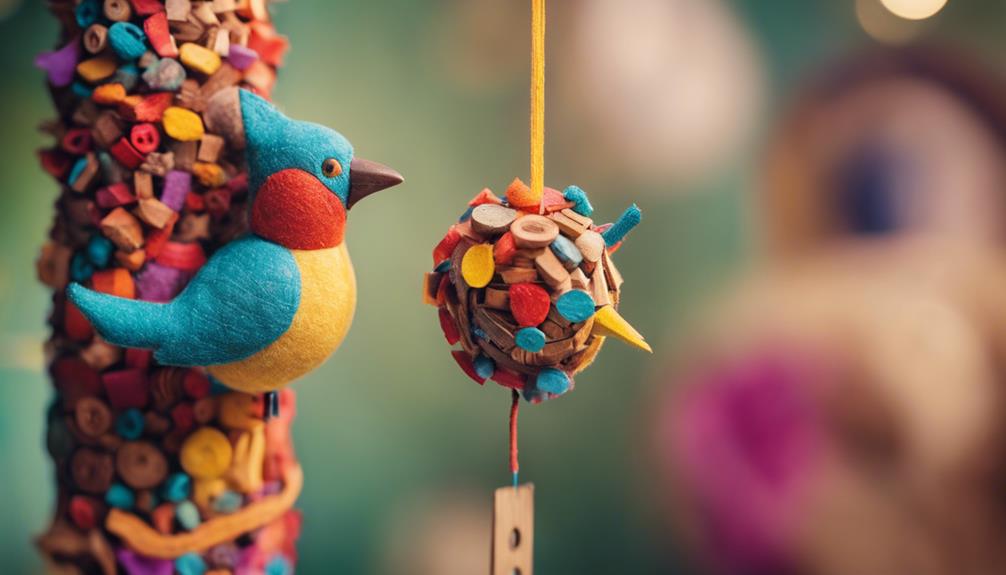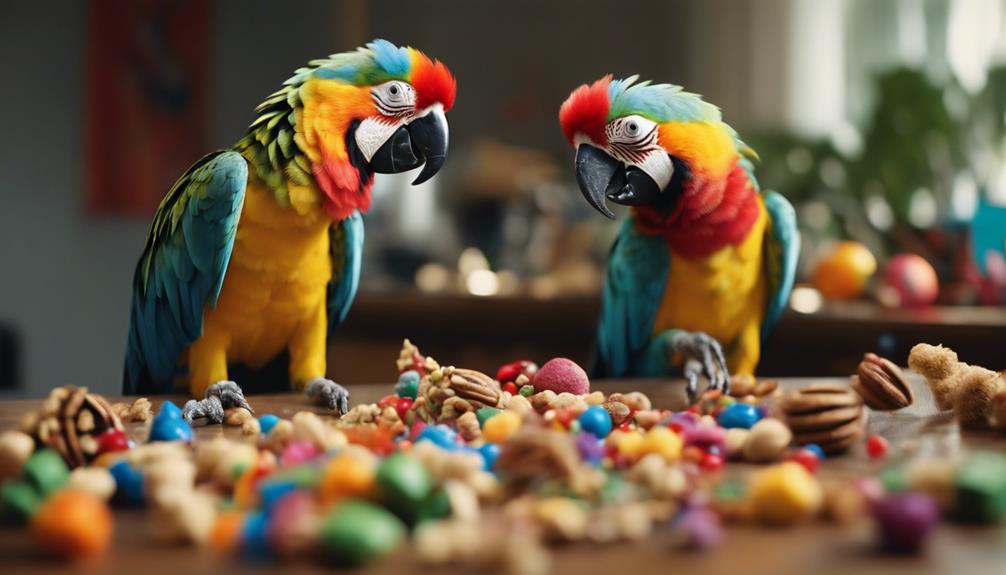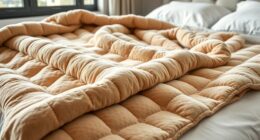To ensure the ideal foraging mat for your rabbit, gather a rubber mat with holes, fleece blankets, scissors, treats, and veggies. Cut the fleece into strips and weave them through the mat to create hiding spots. Choose soft textures to simulate grass, avoiding rough ones. Incorporate scents like dried herbs for sensory stimulation and mix up the location of pockets for a challenge. Personalize the mat based on your bunny’s preferred treats and textures, adjusting colors and shapes accordingly. Prioritize safety by using non-toxic materials, secure assembly, and supervision. Keep the mat clean by spot cleaning, air drying, and regularly checking for wear. Create a safe and entertaining space for your furry companion.
Key Takeaways
- Choose soft, varied textures for comfort and mimicry.
- Strategically place treat pockets for engaging foraging.
- Customize with bunny's favorite treats and textures.
- Ensure safety with non-toxic materials and tight assembly.
- Maintain cleanliness and durability with regular care.
Materials for DIY Foraging Mat
To craft a DIY foraging mat for your bunny, gather a rubber mat with holes, fleece blankets, scissors, pellets or treats, and optionally, vegetables like carrots or beetroot.
Begin by cutting the fleece into strips that are 5cm wide and 25cm long, suitable for inserting into the holes of the rubber mat.
Thread the ends of the fleece strips into loops to create a vital design on the mat. It's important to guarantee that the fleece strips completely fill up the holes to prevent pellets from falling through during use.
An additional tip is to repurpose old fleece blankets with chew holes into strips for the DIY foraging mat, providing a sustainable and resourceful approach.
Choosing the Right Textures

Consider incorporating soft, fleece materials in varying textures to enhance the comfort and natural foraging experience for your bunny on the DIY foraging mat. When choosing textures for your rabbit's mat, aim for options that mimic the feel of grass or hay to create a cozy and inviting space. Avoid rough or abrasive textures that could potentially irritate your bunny's sensitive paws or skin. Opt for materials that are easy to clean and maintain, ensuring a hygienic environment for your rabbit to forage in. Experiment with textures like felt, cotton, or burlap to provide a variety of sensations for your bunny during playtime. Below is a table showcasing some suitable textures for your bunny's foraging mat:
| Texture | Description | Benefits |
|---|---|---|
| Soft Fleece | Cozy and gentle texture | Mimics a comfortable environment |
| Felt | Soft and slightly textured | Provides a tactile experience |
| Cotton | Smooth and breathable | Easy to clean and maintain |
| Burlap | Natural and earthy feel | Adds a touch of rustic charm |
Incorporating Natural Scents
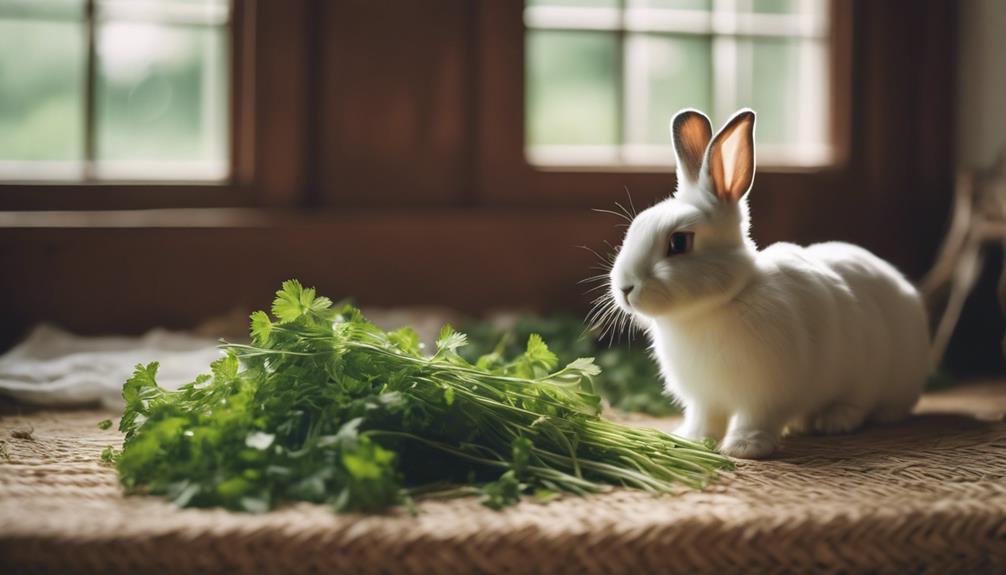
Enhance your bunny's foraging experience by infusing natural scents into their mat. Incorporating natural scents like dried herbs such as parsley, mint, or lavender can stimulate your bunny's sense of smell and elevate their foraging adventure. These enticing scents engage your bunny's curiosity, prompting them to explore the mat more actively. By adding different natural scents, you provide mental stimulation and enrichment for your bunny during foraging activities.
Your bunny's sense of smell is important for maneuvering their environment and detecting food, predators, and companions. Introducing natural scents into their foraging mat taps into this innate ability, making the experience more engaging and rewarding.
Remember to take into account your bunny's preferences and sensitivities when selecting scents, ensuring a positive and enjoyable foraging experience. So, get creative with incorporating natural scents into your bunny's foraging mat to create a sensory-rich environment that will keep them happily hopping along.
Adding Treat Pockets and Hiding Spots

To enhance your bunny's foraging experience, consider strategically placing treat pockets and designing interactive hiding spots on the foraging mat.
These features not only engage your bunny's natural instincts but also provide mental stimulation during playtime.
Treat Pocket Placement
Strategically position treat pockets across the foraging mat to entice your bunny to explore and engage in natural foraging behaviors.
To make the most of your rabbit foraging mat, follow these tips:
- Hide treats in corners, under flaps, and in crevices to keep your bunny engaged and excited while foraging.
- Guarantee treat pockets are securely attached to the mat to prevent your bunny from easily accessing the treats.
- Scatter treats in different locations to stimulate your bunny's natural foraging instincts and keep them mentally stimulated.
- Rotate the placement of treat pockets regularly to prevent your bunny from memorizing the locations and to keep the foraging experience challenging and fun.
Hiding Spot Design
Consider incorporating treat pockets and various hiding spots into your foraging mat design to engage your bunny's natural foraging instincts and provide a stimulating play experience. Treat pockets can serve as hidden spots for your bunny to explore and find treats, encouraging their natural behaviors. Adding different sizes and shapes of hiding spots on the snuffle mat can create an exciting and challenging environment for your bunny to navigate. By strategically placing treat pockets and hiding spots, you can keep your bunny entertained and mentally stimulated during playtime.
| Treat Pockets | Hiding Spots |
|---|---|
| Small pockets | Tunnel-like spots |
| Velcro closures | Fabric flaps |
| Adjustable straps | Grass patches |
| Zippered pockets | Felt-covered holes |
| Mesh compartments | Wooden hut |
Interactive Foraging Features
How can you enhance your bunny's foraging experience on the mat with interactive features like treat pockets and hiding spots? Incorporating these elements won't only make foraging more engaging but also stimulate your bunny's natural instincts and curiosity.
Here are some ways to elevate your bunny's foraging fun:
- Introduce Treat Pockets: Encourage your bunny to search for hidden snacks by incorporating treat pockets into the mat design.
- Create Hiding Spots: Add an element of surprise by strategically placing folds or layers to create hiding spots within the mat.
- Utilize Different Textures: Enhance the sensory experience by using a variety of textures and fabrics on the mat.
- Velcro Attachments: Secure treat pouches or pockets with Velcro attachments for interactive play.
- Experiment with Pocket Shapes and Sizes: Keep your bunny engaged and challenged by trying out various sizes and shapes of treat pockets.
Customizing for Bunny Preferences

To customize your foraging mat for your bunny's preferences, focus on incorporating their favorite treats and textures. By tailoring the design of the mat to cater to your bunny's unique likes and dislikes, you can create a more engaging foraging experience. Experiment with different colors, shapes, and patterns to pique your bunny's interest. Additionally, varying sizes and layouts can help you determine what works best for your bunny's foraging habits. Observe your bunny's reactions and behaviors closely to make necessary adjustments to the foraging mat, ensuring it suits their individual needs and preferences.
| Treats | Textures | Colors |
|---|---|---|
| Fresh herbs | Fleece | Bright hues |
| Dried fruits | Cardboard | Pastel tones |
| Pellets | Hay | Contrasting shades |
Ensuring Safety and Durability
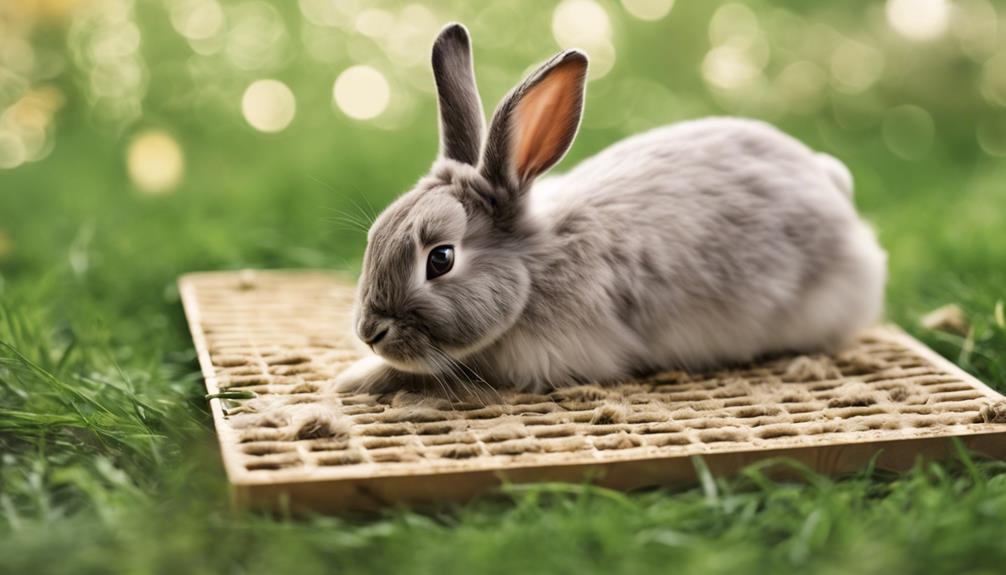
Customizing your foraging mat for your bunny's preferences includes ensuring safety and durability by selecting appropriate materials and supervising playtime. When creating a DIY snuffle mat for your bunny, it's important to prioritize their well-being by following safety precautions and using durable materials. Here are some essential tips to keep in mind:
- Choose durable materials: Opt for non-toxic options like fleece and rubber to create a safe and long-lasting snuffle mat for your bunny.
- Secure assembly: Make sure to tightly secure the fleece strips in the rubber mat to prevent any loose pieces that could be a choking hazard.
- Supervise playtime: Always supervise your bunny while they're using the snuffle mat to ensure they're interacting with it safely.
- Inspect for wear and tear: Regularly check the DIY snuffle mat for any signs of damage to maintain its durability and safety.
- Avoid small or sharp objects: Keep the snuffle mat free of any small or sharp items that could harm your bunny during foraging activities.
Maintenance and Cleaning Tips
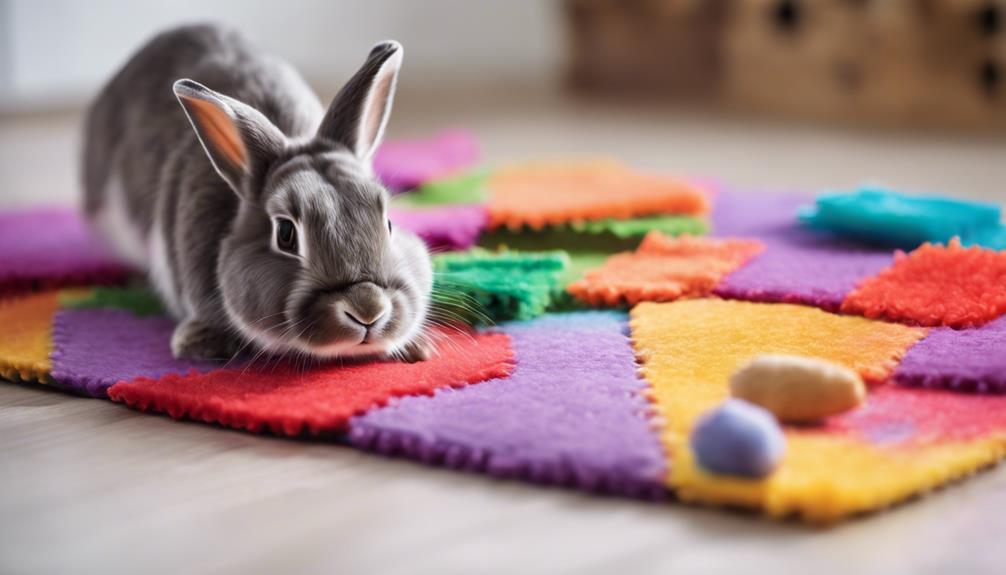
Why is regular maintenance essential for preserving the cleanliness and longevity of your bunny's foraging mat? To guarantee your small pet's safety and hygiene, proper upkeep of the snuffle mat is vital. Remember to spot clean regularly by removing any leftover food or droppings. When it's time for a thorough cleaning, wash the foraging mat in cold water with mild detergent to maintain cleanliness. After washing, allow the mat to air dry completely before returning it to your bunny's play area. Avoid using harsh chemicals or bleach when cleaning the foraging mat as these can be harmful to your pet. Additionally, inspect the mat for any signs of wear and tear; if there are any, replace it promptly to safeguard your bunny's safety. Below is a table summarizing the cleaning tips for maintaining your foraging mat:
| Maintenance Tips | Cleaning Tips | Foraging Mat |
|---|---|---|
| Spot clean regularly | Wash in cold water with mild detergent | Ensure pet's safety |
| Inspect for wear and tear | Avoid harsh chemicals or bleach | Maintain cleanliness |
| Replace if necessary | Air dry completely before use | Prolong longevity |
Frequently Asked Questions
How to Make a Rabbit Foraging Mat?
To make a rabbit foraging mat, cut fleece strips and insert them into a rubber mat with holes. Fill up the holes to avoid pellets falling through. Use old blankets for a fun design.
What Is the Best Forage for Rabbits?
For your bunny, the best forage includes high-fiber grass hay like timothy, orchard, or meadow hay. Dark leafy greens, herbs, and occasional root veggies are excellent. Limit commercial pellets and use treats like fruits sparingly for variety.
How to Make a Foraging Mat?
To make a foraging mat, cut fleece into strips and insert them into a rubber mat's holes. Thread the ends into loops to secure. Make sure the fleece fills the holes to prevent treats from slipping. Repurpose old fleece for a cozy touch.
Do Rabbits Like Snuffle Mats?
Oh, yes, rabbits adore snuffle mats! They find joy in exploring, sniffing out treats, and staying active. These mats engage their natural instincts, keeping them entertained and preventing boredom. Your bunny will love it!
Conclusion
Now that you've crafted the perfect foraging mat for your bunny, it's time to watch them hop to it and enjoy their new play area.
With the right textures, scents, and hiding spots, your furry friend will have a blast exploring and foraging for treats.
Remember to customize the mat to your bunny's preferences, prioritize safety and durability, and keep it clean for continued enjoyment.
Happy foraging!


